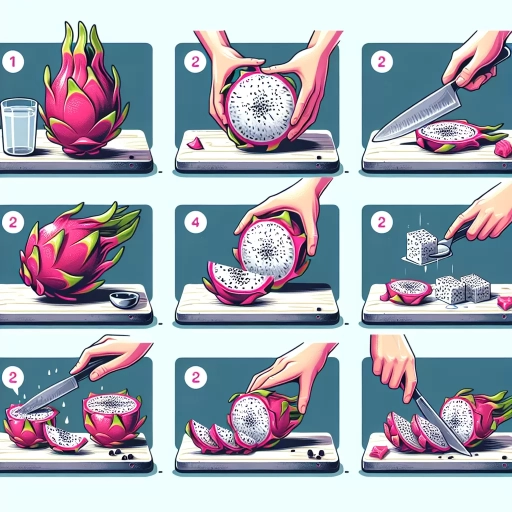How To Cut Dragon Fruit

Understanding Dragon Fruit and Its Benefits
The Origin and Varieties of Dragon Fruit
Dragon fruit, also known as pitaya, originates from Central America but is now grown and enjoyed all over the world. There are three main types of dragon fruit: Hylocereus undatus, Hylocereus costaricensis, and Hylocereus megalanthus. Each variety differs slightly in color and taste, with the most common type, Hylocereus undatus, having white flesh and a mild flavour. Understanding these different varieties can help consumers make informed decisions when purchasing and preparing dragon fruit.
The Nutritional Value of Dragon Fruit
Dragon fruit is not only exotic and tasty but also packed full of nutrients. It's high in vitamins C, B1, B2, and B3, and also packs a good amount of fiber, iron, and magnesium. This makes the dragon fruit a great choice for those seeking to improve their nutritional intake. Not only that, but the seeds of the dragon fruit also contain omega-3 and omega-6 fatty acids, which are beneficial for heart health. Despite its impressive nutritional profile, it is important to note that dragon fruit is best consumed as part of a balanced diet.
Health Benefits of Eating Dragon Fruit
The high fiber content found in dragon fruit aids in the body's digestion and can help prevent certain conditions such as constipation and irritable bowel syndrome. The antioxidants found in the fruit are beneficial for the skin, helping it remain healthy and glowing. Moreover, studies have shown that the consumption of dragon fruit can help regulate blood sugar levels and decrease bad cholesterol, both of which are beneficial for those with diabetes or heart disease. Despite these benefits, consumers should remember that eating dragon fruit alone will not guarantee health improvements, and they should consult with a healthcare provider for personalized dietary advice.
How to Properly Cut and Serve Dragon Fruit
Choosing the Best Dragon Fruit
Before one can cut a dragon fruit, it's important to choose the best one. Look for a fruit with even, bright color and without any dark brown spots or bruises. The spikes should be soft and evenly spaced and the fruit should yield slightly to the touch, much like a ripe kiwi. However, it shouldn't be too soft as that may indicate overripeness. After mastering how to select the perfect dragon fruit, one can proceed to the cutting process.
Step-by-step Guide to Cutting Dragon Fruit
First, rinse the dragon fruit under running water to remove any dirt or debris. Then, using a sharp knife, cut the fruit lengthwise down the middle. After that, scoop out the flesh with a spoon, much like one would do with an avocado. If the fruit is well ripened, the flesh should come out easily, leaving the colorful skin behind. Alternatively, the fruit can be quartered, with the flesh then being cut away from the skin. Once the flesh is removed, it can be sliced into bite-sized pieces for easier consumption.
Serving Suggestions for Dragon Fruit
Dragon fruit is both delicious and versatile, making it a perfect addition to a variety of dishes. It can be eaten on its own, added to fruit salads for a tropical twist, or combined with yogurt for a healthy dessert. Dragon fruit can also be blended into smoothies or juices for a refreshing drink, or even used in savoury dishes like salads or salsas for a unique flavor combination. Regardless of how it is served, dragon fruit is sure to bring an exotic touch to any meal.
Practical Tips for Storing Dragon Fruit
Short-term Storage
If the dragon fruit is ripe and ready to be eaten, it can be stored in the fridge for up to a week. It should be kept in a sealed plastic bag to prevent it from absorbing other flavors in the fridge. If the fruit has been cut, the remaining pieces should be wrapped in plastic wrap to prevent them from drying out.
Long-term Storage
For long-term storage, dragon fruit can be frozen. The flesh can be scooped out, cut into chunks, and laid out on a baking sheet. Once the pieces are frozen, they can be transferred to a freezer bag for convenient storage. They can be used in smoothies or thawed out for consumption, though frozen dragon fruit will have a slightly softer texture than fresh.
Tips for Preventing Wastage
Optimal storage methods can help prevent wastage, but so can utilizing all parts of the fruit. For example, the skin can be used as a serving bowl for fruit salads or desserts, giving an eco-friendly and aesthetically pleasing touch to any dish. Moreover, the small seeds in dragon fruit's flesh are perfectly safe to eat, so there is no need to remove them and waste precious fruit in the process.